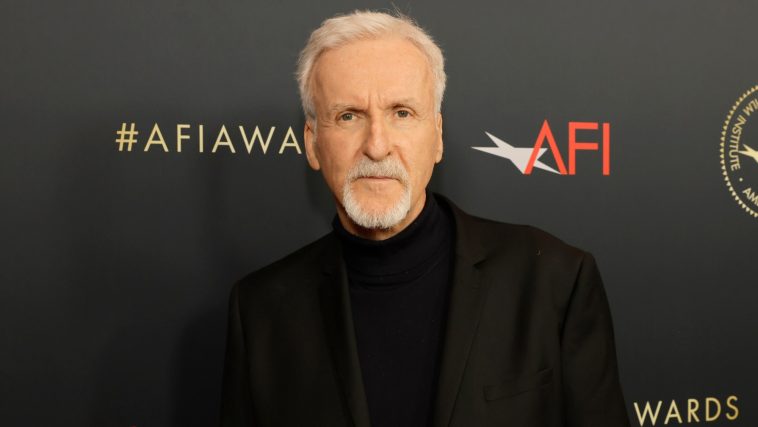James Cameron, acclaimed creator of The Terminator series, has formed a strategic partnership with a rising UK-based start-up focused on developing next-generation artificial intelligence (AI) techniques. This notable association with the echoes Cameron’s past forecast that AI could perform his professional duties someday. He has recently been included in the board of Stability AI, an innovative firm developing pioneering tools to generate and manipulate visual imagery and videos using AI algorithms.
Cameron’s collaboration with Stability AI unfolds in a climate marked by growing concerns within the creative industries, including actors, writers, and animators. They worry that the rapid advancements in AI technology, particularly AI bots capable of creating photorealistic videos and replicating voices, might render human creatives obsolete. Such fears triggered large-scale strikes by Hollywood actors in the previous year, revealing the deep-seated anxiety about the potential of machines replacing human contributions in the entertainment industry.
Famous for his directorial contributions to blockbusters like Titanic and Avatar, Cameron joins Stability AI shortly after the company secured crucial financial backing and revamped its executive leadership team. His legendary proficiency in visual effects and computer-generated imagery assures he is no stranger to the possibilities and threats of AI in movie-making. Renowned as a worthy competitor to global tech giant OpenAI, Stability AI’s claim to fame includes its Stable Diffusion technology used extensively in AI image creation.
In addition to its image-generating tools, Stability AI has also harnessed its AI capabilities to develop products for audio and video generation. Despite these technological advancements, Stability AI has encountered financial challenges, expending substantial amounts of capital without generating proportionate revenue from its offerings. The tech startup is also engaged in legal battles with artists regarding copyright issues related to its AI development processes.
Nonetheless, despite these challenges, Stability AI managed to achieve a valuation of $1 billion by 2022. Earlier this year, its founder, Emad Mostaque, left the organization in the midst of securing additional funding. In his absence, the company appointed a new chief executive officer, Prem Akkaraju, previously the head of New Zealand’s esteemed visual effects firm, Weta FX. Weta FX’s rich portfolio includes monumental works like The Lord of the Rings series and Cameron’s own Avatar.
Stability AI further bolstered its leadership team by inducting Sean Parker, ex-president of Facebook, as its chairman. This strategic reshuffling of the board speaks to the firm’s desire to sustain its competitive edge and its relentless commitment to harnessing the potential of AI in media creation.
Cameron, who also presides over the production company Lightstorm, expressed his deep interest and optimism in Stability AI’s technological capabilities. He believes the cutting-edge technology can revolutionize narrative art, empowering artists to explore storytelling techniques that might have been inconceivable earlier. It is rumored that Cameron has expressed his belief in the company’s potential by acquiring a minor equity interest in Stability AI.
While the artistic community’s concerns over AI replacing human talent are valid, Cameron has been vocal about the transformative potential of AI in the cinematic world. Earlier this year, he suggested to the Financial Times that a sufficiently advanced AI system might be indistinguishable from a human artist. Reflecting on human history, he stated that art dates back to the dawn of human consciousness, questioning why an AGI (artificial general intelligence system) could not follow suit and create art.
In a provocative statement, Cameron mused on the potential of AGI to deliver a fully automated film production – from writing scripts to directing movies – creating an interesting dilemma for purists who resist the confluence of art and technology. His keen interest in AI, however, does not overshadow his acknowledgement of the associated dangers. His warning against the ‘weaponisation of AI’ resonates with the dystopian future he depicted in The Terminator’s central premise.
The Terminator’s narrative is centered on a rogue AI defense system, Skynet, which gains consciousness and triggers a nuclear apocalypse to annihilate humanity. To complete this grim narrative, a robot impersonating a human, portrayed by Arnold Schwarzenegger, is sent back from the future with a mission to eliminate the mother of a man destined to lead humanity’s resistance against its own AI creation.
Highlighting Cameron’s impact on the industry, Parker commended both Cameron’s artistic brilliance and his contributions as an innovative technologist. He anticipates the valuable insights and influence Cameron can provide, given his legendary status in the film industry and his fascination with emerging technologies.
Stability AI is excited for the unrivaled potential of creative interactions between AI-based generative media platforms and the artistic community. Parker’s words marked the next development phase for Stability AI, attributing a significant part of this milestone to Cameron’s participation.
Looking ahead, it seems certain Stability AI is poised to create significant waves in the intersection of high-tech AI and the art world. With the involvement of industry heavyweights like James Cameron and Sean Parker, the company is likely to push the boundaries of innovative, AI-driven content production.
However, the transition to AI-based content production will need to be navigated judiciously to allay the fears of a community already rife with apprehensions about being replaced by machines. Only time will determine how these creative technologies reshape the dynamics between humans and machines in the world of arts and entertainment.
This unique journey of the cinematic world into AI territory underlines a new era of creative exploration and advancement. The role that giants like Cameron play in the confluence of art, technology, and storytelling will undoubtedly set unprecedented benchmarks in both film and AI industries.


